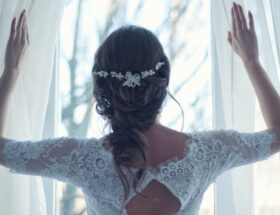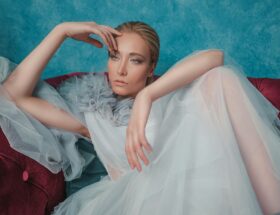The 2010s may not seem like distant history, but a quick glance back reveals just how much has changed—especially in the world of fashion.
Surprisingly, the most significant fashion innovation of the decade didn’t originate from the iconic fashion capitals of Milan, New York, or Paris.
Instead, it hailed from Silicon Valley.
Yes, we’re talking about Instagram.
Historically, fashion milestones have often been driven by advancements in textile technology or the introduction of new silhouettes that dramatically altered how we dress.
Think of the faux silk stockings of the 1940s, the stretch jeans of the 1970s, the conical bras of the 1950s, miniskirts in the 1960s, and padded shoulders in the 1980s.
However, the advent of Instagram brought a unique fashion revolution unrelated to fabric or design.
Instagram gave everyone a platform and an audience, leading to the era of dressing for the gram.
This trend emphasized statement pieces that were photographed well, fueling the rise of fast fashion.
People needed a constant supply of trendy outfits for their endless outfit-of-the-day posts.
Quality often took a backseat to visual appeal—if an outfit looked good on camera, who cared about the material?
The 2010s also saw the casual-ification of fashion with the rise of athleisure and streetwear.
The term “athleisure” was officially recognized by the dictionary in 2015, and collaborations like Louis Vuitton’s partnership with Supreme in 2017 cemented streetwear’s place in high fashion.
Yet, dressing up was still very much in vogue, with sky-high platform pumps, peplum dresses, and pencil skirts dominating the scene.
Fashion continued its cyclical nature, swinging back and forth between extremes.
Women’s Trends of the 2010s
Insta-Style: Dressing for the ‘gram

Image Credit: Pinterest
With the launch of Instagram in 2010, fashion communication between lovers of style, brands, and customers accelerated dramatically.
Trends could spread faster than ever before.
If New York’s fashion elite once dressed for street style photographer Bill Cunningham, they now dressed for Instagram.
Fashion bloggers quickly adopted the platform, transforming their personal brands and influencing millions.
The likes of The Blonde Salad, Man Repeller, Style Bubble, and Gary Pepper Girl became Chiara Ferragni, Leandra Medine Cohen, Susie Lau, and Nicole Warne, respectively.
Documenting outfits on Instagram led to a rise in maximalist, colorful, and power-clashing ensembles.
Unique styling became as important, if not more so, than the brands themselves.
Stacked Shoes: The Armadillo and the Platform Pump

Image Credit: Pinterest
The 2010s began with a fascination for Alexander McQueen’s fantastical Armadillo shoes from his last runway show in 2010.
These bulbous, animalistic shoes captivated fashion eccentrics like Lady Gaga.
Platform shoes, including Christian Louboutin’s red-bottom heels and Saint Laurent’s Tribute Sandal, were the era’s fashion-forward footwear, though this trend faded by the mid-2010s as sneakers gained popularity among Gen Z.
Business Casual: The J.Crew Look

Image Credit: Pinterest
Under Jenna Lyons’ direction, J.Crew popularized a new aesthetic combining office-wear classics with casual, colorful elements.
Peplum tops, pastel skinny pants, and collared shirts became staples, often paired with sparkly necklaces and sock bun hairdos.
Athleisure for Always: Yoga Pants Everywhere

Image Credit: Pinterest
By 2015, “athleisure” entered the dictionary, reflecting a style of clothing suitable for both exercise and everyday wear.
Tory Burch’s Tory Sport line epitomized this trend, showcasing how yoga pants and sporty stripes became mainstream.
Mad for Collabs: Designers Team Up
The 2010s were marked by an explosion of fashion collaborations, often blending high fashion with unexpected partners.
Givenchy’s Rottweiler tees in 2011, Supreme x Louis Vuitton in 2017, and Vetements’ numerous quirky partnerships exemplified this trend.
A Return to Maximalism: Geek Chic at Gucci

Image Credit: Pinterest
Alessandro Michele’s tenure at Gucci brought a quirky, maximalist aesthetic that contrasted sharply with Tom Ford’s earlier sexy styles.
Michele’s mix of patterns and vintage-inspired pieces became a defining look of the decade.
Cool Parents: Mom Jeans and Dad Sneakers

Image Credit: Pinterest
The 2010s saw a shift from skinny jeans to looser, high-waisted mom jeans and chunky dad sneakers, popularized by brands like Balenciaga.
Men’s Trends of the 2010s:
Men’s fashion mirrored many women’s trends, with influences from J.Crew’s mid-century suiting to the dominance of athleisure and streetwear.
The 2017 Supreme and Louis Vuitton collaboration and Kanye West’s minimalist Yeezy line exemplified the era’s key styles.
By the late 2010s, relaxed tees and dad sneakers were the uniform of the fashionable man.
Cultural Context:
The 2010s were transformative beyond fashion.
Instagram’s launch in 2010 changed communication, Uber and Airbnb revolutionized the gig economy, and music, from Lady Gaga’s meat dress to Beyoncé’s Lemonade, shaped cultural moments.
Major social movements like OscarsSoWhite and MeToo brought significant attention to issues of racial representation and sexual misconduct.
Top Designers of the 2010s:
- Prada
- Bottega Venetta
- Loewe
- Chloé
- Balenciaga
- Burberry
- Yves Saint Laurent
- Marc Jacobs
- Versace
- Miu Miu
- Dolce & Gabbana
- Alexander McQueen,
- Fendi
- Tom Ford
- Gucci
- Martin Margiela
- Dries Van Noten
- Vivienne Westwood
- Comme des Garçons’ Rei Kawakubo
- Yohji Yamamoto
- John Galliano
- Chanel, Oscar de la Renta
- Kenzo, Giorgio Armani
- Valentino
- Michael Kors
- Moschino
- Alaïa, Lanvin
- Roberto Cavalli
- Stella McCartney
- Viktor & Rolf
- Gareth Pugh
- Christopher Kane
- Rodarte
- Phillip Lim
- Jason Wu
- Jimmy Choo
- Christian Louboutin
- Nina Ricci
- Raf Simmons
- Lanvin
- Virgil Abloh
- Erdem
- Jonathan Anderson
The Legacy of 2010s Fashion
As we reflect on the 2010s, it’s clear that the decade was defined by a blend of innovation and nostalgia.
Instagram transformed how we perceive and engage with fashion, turning everyday individuals into influencers and style icons.
The rise of athleisure and streetwear blurred the lines between casual and high fashion, making comfort and individuality key components of style.
Collaborations became a hallmark of the era, bringing together unlikely partners to create buzzworthy collections.
From Supreme x Louis Vuitton to Christopher Kane’s collaboration with Crocs, these partnerships challenged traditional fashion norms and expanded the industry’s creative boundaries.
The 2010s also witnessed a return to maximalism, with designers like Alessandro Michele at Gucci championing bold, eclectic styles.
This more-is-more approach contrasted sharply with the minimalist trends of previous decades, highlighting fashion’s cyclical nature.
Ultimately, the 2010s were a decade of rapid change, driven by technological advancements and a shifting cultural landscape.
As we move forward, the lessons and trends of this transformative period will continue to influence fashion and style, reminding us of the dynamic and ever-evolving nature of the industry.



 Sharing my stylish adventures and wanderlust-filled journeys
Sharing my stylish adventures and wanderlust-filled journeys  Join me for fashion inspiration, travel tips, and a glimpse into my fashionably nomadic life
Join me for fashion inspiration, travel tips, and a glimpse into my fashionably nomadic life 
 #FashionandTravelBlogger #StyleWanderer #WanderlustFashion
#FashionandTravelBlogger #StyleWanderer #WanderlustFashion






